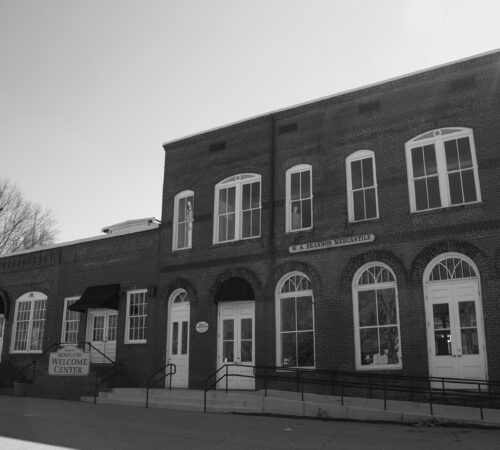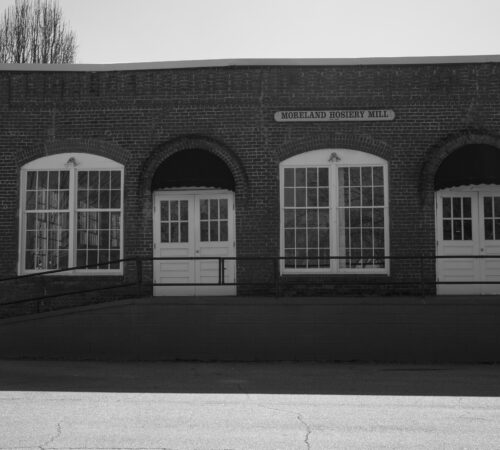Initially a cotton agricultural community, Moreland eventually opened its own textile mill.
While the textile industry began many years prior, the first textile mill constructed in Moreland was the Moreland Hosiery Mill in 1920 that operated until 1978.
Visit
Things to Do
- Erskine Caldwell’s Childhood Home, 20 West Camp Street: Caldwell, author of Tobacco Road, God’s Little Acre, and other Southern novels, was born in Moreland in 1903. His birthplace has been moved to the Town Square and converted into a museum, open by appointment.
- Moreland Hometown Heritage Museum, 7 Main Street: The Moreland Cultural Arts Alliance, Inc. and Moreland’s Hometown Heritage Museum combined their collections to open the Hometown Heritage Museum in the Historic Moreland Mill. This complex of unified commercial buildings from the 1890s era is listed on the National Register of Historic Places and also houses Town Hall. An 8,000 square feet portion of the complex is dedicated to a museum of “things” from the home, the farm, the country store, and Moreland Knitting Mills dating from 1900-1945. Their hours of operation are Thursday through Saturday 10:00 am – 3:00 pm.
History
The community that became Moreland began as a settlement around the Mt. Zion Methodist Church in 1843. The railroad arrived in 1852, along with a wooden train station called Puckett Station. In 1888, the town was named for the first doctor with the Atlanta and West Point Railroad, Dr. John Moreland, and a railroad depot was built.
Primarily an agricultural region, local farmers in Moreland grew cotton as well as fruit. Marketing the produce through the railroad, local farmers utilized a local cotton ginnery and a brick cotton warehouse constructed along the railroad in 1904.
The boll weevil began to destroy the cotton crops as early as 1915 and through the 1930s, leaving many farmers destitute. Well-known yet controversial local novelist Erskine Caldwell, whose house remains on the Town Square, wrote about the region’s Depression-era challenges in his most famous books Tobacco Road and God’s Little Acre.
In 1920, the Moreland Hosiery Mills opened in an old cotton warehouse and fertilizer plant built around 1904. The Moreland Hosiery Mills employed twenty-five people, mostly white women, girls, and boys, to produce seamless socks for women and children. Due to a decrease in the cotton market and financial hardship, a group of investors purchased the mill in 1926. Renamed the Moreland Knitting Mills the company manufactured cotton hosiery, later rayon, and nylon hosiery. The knitting mill was the major employer in the area until it ceased operations in 1968.
After the knitting mill closed, the property was sold and used as a storage facility except for a brief period when Bobby Powell manufactured women’s garments on the property. In 1974, the property was sold to the PEB Corporation to manufacture women’s uniforms and housecoats until it closed in 1978. In 1983, the PEB Corporation gifted the property to the City of Moreland.
The former hosiery mill is now the Hometown Heritage Museum. The museum hosts exhibitions about local history and authors, including both Erskine Caldwell and Lewis Grizzard, a prominent author and commentator on southern history, life, and culture. The 1890s era building is on the National Register of Historic Places and houses Town Hall.
Charter Trail Members
- Town of Moreland
- Coweta County Convention and Visitors Bureau
- Coweta County Genealogical Society
- Newnan-Coweta Chamber of Commerce
- Newnan-Coweta Historical Society
Resources to Explore
Click on the following links to learn more about this region.
- Facts for Kids
- Digital Library of Georgia
- Georgia Archives Virtual Vault
- Georgia Historical Society
- Coweta County, New Georgia Encyclopedia
Back to Community List
Email the Trail at wgtht@westga.edu or visit our Contact Us page for more information.


